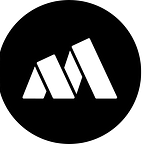The Fourth Industrial Revolution
“We must develop a comprehensive and globally shared view of how technology is affecting our lives and reshaping our economic, social, cultural, and human environments. There has never been a time of greater promise, or greater peril.” -Klaus Schwab
The Story
The hurricane dropped more than 40 inches of water in less than 4 days. The resulting flooding left hundreds of thousands of people displaced, took more than 60 lives, and did more than $100 billion in damage.
A year later, Houston is not fully recovered from Hurricane Harvey. It was one of the most damaging hurricanes in United States history. According to experts, there was a secret ingredient that made it so destructive. It wasn’t the wind, the sea levels, or the flow of the San Jacinto river. In fact, it wasn’t a natural problem at all. It was entirely of our own making. According to experts, the secret ingredient that made Hurricane Harvey so dangerous… was concrete…
(Scroll to the bottom to read the rest of The Story!)
What Is The Fourth Industrial Revolution?
Ian and Chad welcome back author, podcast host, and tech thought leader Dr. Jonathan Reichental. Dr. Reichental shares his thoughts on the 4th Industrial Revolution and what you can expect as it approaches.
“You can’t talk about the future without talking about climate change… I think you need to frame the fourth industrial revolution through the lens of the environment.”
Listen to the Episode!
The #1 Way to Manage Your Apple Devices
Today’s The Mission newsletter is brought to you by Jamf Now, the #1 device management solution for all of your company’s Apple devices.
To learn more about how Jamf Now can secure your workplace’s Macs, iPhones, and iPads, head here and set up your first 3 devices for free!
News That Matters:
→ To hear more from Jonathan Reichental and why cities are the perfect platform for innovation, listen to this episode of IT Visionaries.
→ “Whether you’re exploring the newest open source projects, watching provocative keynotes, perusing the most recent tidal wave of vendor press releases, or merely having casual discussions with customers and peers, one thing is clear: everyone is in a rush to define, understand and conquer the edge. But what is the edge really?” -State of the Edge
→ From the Gadget Lab Podcast: Pinterest CEO Ben Silbermann talks about the future of visual search and Pinterest’s plans to IPO.
→ For a fun look back at business news in 2018, check out Bloomberg Businessweek’s Jealousy List.
→ Palantir isn’t just changing tech, they are changing the world: For Palantir, a partnership with the government is a chance to innovate
→ The World Economic Forum recently outlined how the Fourth Industrial Revolution will impact The Future of Jobs. Here’s what that means for biotech companies.
→ “We’re on the cusp of the Fourth Industrial Revolution, or Industry 4.0. It’s quite different than the three Industrial Revolutions that preceded it — steam and water power, electricity and assembly lines, and computerization — because it will even challenge our ideas about what it means to be human.” -The 4th Industrial Revolution Is Here — Are You Ready?
→ As tech evolves, what’s in store for the future of cities? Listen to The Future of Cities podcast to find out.
The Story (continued)
….Houston is in many ways a model city. It has great universities, a soaring economy, and has done an admirable job integrating people from all over the world. Now city planners and elected officials have to find a way to make sure this progress lasts for centuries.
In the past few decades, Houston has become, like many cities, a place full of driveways, highways, and parking lots. It has lost 38,000 acres of wetlands, mostly to development. When you replace wetlands with concrete, you are eliminating an area that can absorb water. This doesn’t have much of an impact in normal weather. But during a hurricane, the result is catastrophic.
And it is not just disasters that are catastrophic. The ways that we build, fuel and maintain our cities are doing lasting damage.
If we want to prevent disasters like Hurricane Harvey from having such a significant impact, we need to design our cities in more sustainable ways.
What we can do to make our cities more sustainable? To explore the innovations that will transform how we live, work, and play we invited on Dr. Jonathan Reichental. He talks about previous industrial revolutions, and why our current, Fourth Industrial Revolution, will have to work hand in hand with the environment.
A Greek Proverb states, “A society grows great when people plant trees whose shade they will never sit in.”
Building sustainably is about meeting that mandate.
People are bursting with ideas that will make our society safer, more beautiful, happier, and more sustainable.
The future has never looked brighter. But that is only if we work hard to solve the problems our cities face.
Those who come after us are going to live in the cities that we build, for better or for worse. If we fail to invest in exponential solutions, they will have to start from scratch. If we do plant those metaphorical (and actual) trees, we’ll have better cities in our lifetimes, and in the lifetimes of those who follow.
Our Media
The Mission is a new kind of a media company. We publish stories, videos, and podcasts to help smart people get smarter. You can find us on Facebook, Twitter, and Instagram or learn more about us here. We’d love to connect!
Custom Podcasts
The Mission helps mission-driven companies build trust and connect with customers in a new way. We create custom podcast sponsorships for enterprise companies. To learn more about why companies like Salesforce trust us to produce results, connect with our team here.
